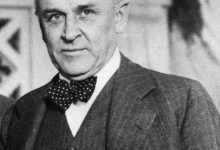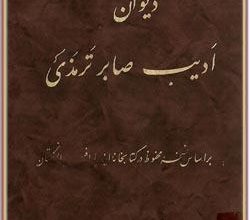About the fifth Achaemenid king; Khashoggi Shah

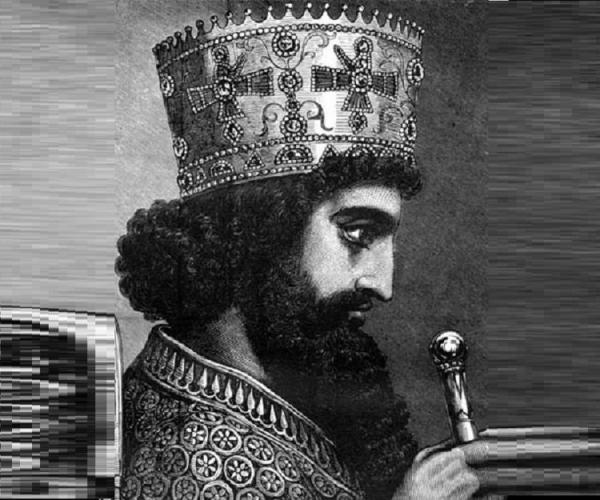 Khashoggi Shah
Khashoggi ShahA summary of the biography of Khashayar Shah:
Full name: Khashayarshai Ikem
Date of birth: 519 BC
Place of birth: Iran
Reason for Fame: Fifth Achaemenid King
Past: Darius the Great
Successor: Ardeshir I
Died: August 466 BC
Tomb: Mount Rahmat, Naqsh Rostam
 Biography of Khasyar Shah
Biography of Khasyar ShahKhasyar Shah's biography:
Khasyar Shah is the fourth king of the Achaemenid dynasty who ruled over a large geographical area. This geographical area stretches from one side to the Jihun and Sihon rivers and from the other side to Greece and Egypt. Darius and Atossa, who were granddaughters of Cyrus the Great, are known as the parents of Xerxes.
Ever since the Achaemenid government was founded by Cyrus the Great, it has had a religion, and the Iranians had been able to expand their geographical borders from beyond the Nile, namely Sihun and Jihun in the northeast to Sind and Punjab in the southeast, and from the Black Sea and Greece to the Mediterranean and Libya. give After Darius, King Xerxes inherited a large land in which different tribes lived. In the last years of Dariush's reign, we witnessed wars between Iran and Greece, the scope of which extended to the reign of King Xerxes.
It is mentioned in historical books that King Xerxes wrote that one of his wives named Esther was from the Jewish people. Esther was one of the executors of Jewish decrees in Iran, who had a great influence on her husband. During the reign of Xerxes, his minister Haman issued an order to kill the Jews, but Esther, the wife of Xerxes, was able to prevent the execution of this order. It was in this way that the Jews were freed from mass slaughter and Haman the minister was hanged.
Khashayarshah consists of two parts, Khashai means king and Arsha means hero. With this explanation, it can be said that Khashayarshah means king and hero. Some people interpret him as a heroic ruler.
According to the sources, this name was given to Xerxes after he succeeded him and sat on the throne.
When Xerxes reached the government of Iran, he went to Egypt to calm down the rebellion that had started in the country. After Egypt, the people of Babylon also started the rebellion. He was able to bring Babylon under the rule of the Achaemenids. King Xerxes entrusted the governorship of Babylon to Zopir.
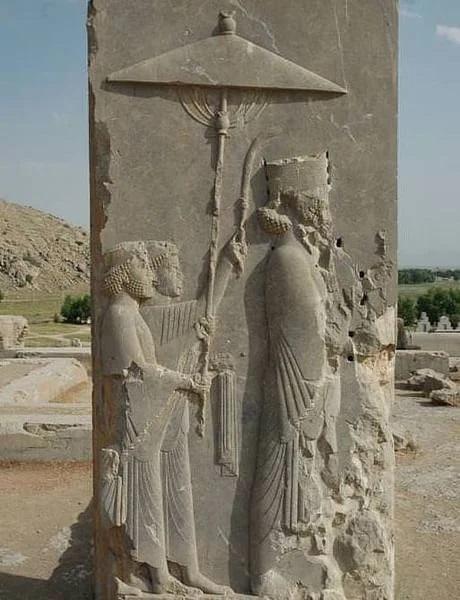 Xerxes of the Achaemenid kings
Xerxes of the Achaemenid kingsIn the last years of Darius' reign, he attacked Greece to take revenge on the Greeks for attacking Sardis and burning it down. The famous Marathon battle took place during Darius's reign, but Darius died before the end of the war. After Darius and Xerxes came to power, he tried to finish his father's work. In Athens, after the defeat that Iran had experienced in Marathon due to hatred of Iran, predictions were made and the Athenian general named Themistocles spent a lot of money in advance to strengthen his naval forces.
Xerxes decided to go to war with Greece and to achieve this goal, he prepared a huge force so that the Greek historian Herodotus greatly exaggerates the description of Xerxes army. In order to exaggerate Yotan's victory in the war with Xerxes, he mentions the number of Iranian troops as very large.
Xerxes orders a bridge to be built on the Dardanelles so that Iranian ground forces can cross this bridge and reach Greece. When the Iranian forces reached Greece, they did not face any resistance until Themistocles issued a call for war with the Iranians. He was able to persuade the Greek cities to accompany him. In this way, a huge alliance of the city governments of Athens and Sparta was formed against Iran.
Reasons for Iran's defeat from Greece:
Iranians were not interested in war with Greece, they didn't even see a reason for it. By applying better policies, Xerxes could have prevailed over the Greeks without any war. The weapons that the Iranians used against the Greeks were not heavy, and the Iranian army had no training on this matter, the weapons that they used in this war were bows and arrows.
Therefore, among the reasons for the defeat of the Iranians, we can mention the unwillingness of the Iranians to war, the unfamiliarity of the Iranians with the geography of Greece, and the motivation of the Greeks to maintain their independence.
Iranian armies were used to fighting in large and wide plains, but they were unfamiliar with the wars that took place with Greece in the straits and mountainous areas. For this reason, a heavy blow was inflicted on the Iranian army and it also provided the ground for the defeat of the Iranians.
The Greeks had a high motivation for war with Iran, they showed many sacrifices in order to avoid being subjugated by Iran. The people of Greece were not ready to free their land from the domination of the Iranians, that's why they had a high motivation to participate in the war and win.
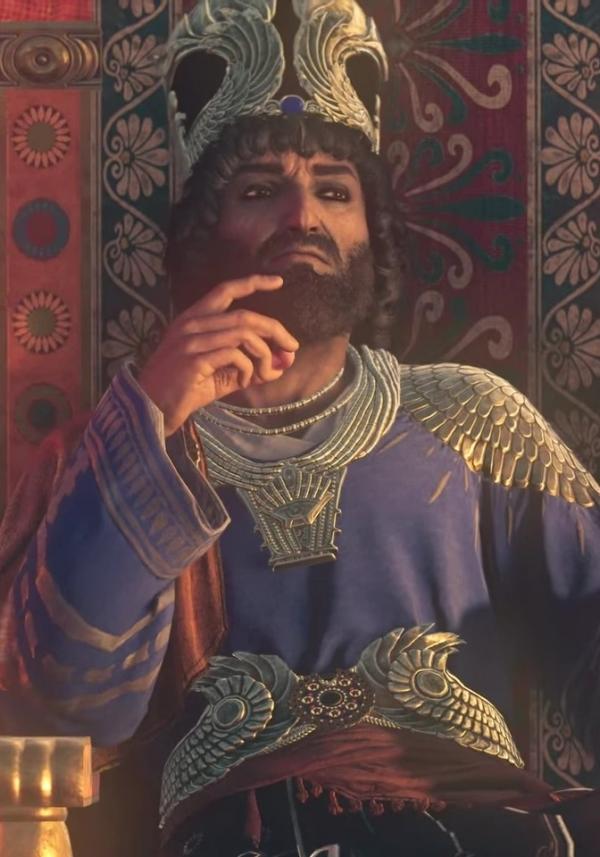 The historical period of the kingdom of Xerxes Shah
The historical period of the kingdom of Xerxes ShahArchitectural works and buildings of the period of Khashayar Shah:
Hadish yard:
One of the important architectural buildings in the Achaemenid era, which was built by the order of Xerxes, and there were guards standing on the walls and stairs of this building, on the other hand, historical inscriptions can also be seen in this courtyard.
On both sides of the stairs of this architecture, images of a lion attacking a cow are drawn, and on the walls of the stairs, tribute-bringers can be seen entering another courtyard from Hadish's yard.
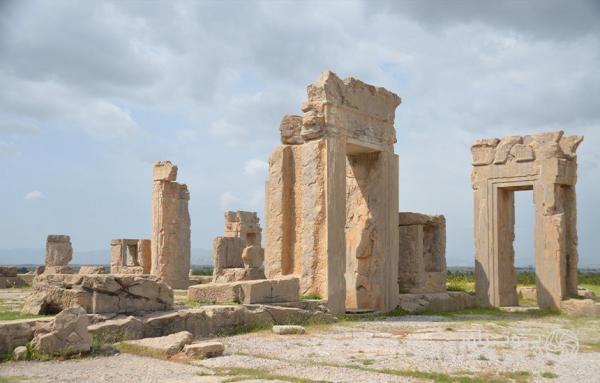 The works left by Khasyar Shah; Hadish's yard
The works left by Khasyar Shah; Hadish's yardThatcher Palace:
Thatcher's palace is located in the south of Hadish yard. The construction of the Techer Palace began during the period of Darius I and was completed during the reign of Xerxes. In the gates of this palace, reliefs of the king fighting with lions, wild bulls or mythical animals can be seen. The head and feet of this legendary animal look like a lion from the front and an eagle from the back, and their tail is like a scorpion. The stone walls of this palace are so smooth and polished that they called it “mirror house”.
The inscription on the entrance of the Thatcher Palace shows that Egyptian artists were hired to carve these stones. The porch of this palace is located in two rows of four columns, and two rows of stairs can be seen on both sides of the pillared porch, which shows the tributes of the bringers with gifts.
Sadston Palace, which was built by the order of Xerxes, was burnt down by Alexander the Great's attack on Iran. What remains is a square-shaped central hall whose roof is placed on 10 rows of 10 columns.
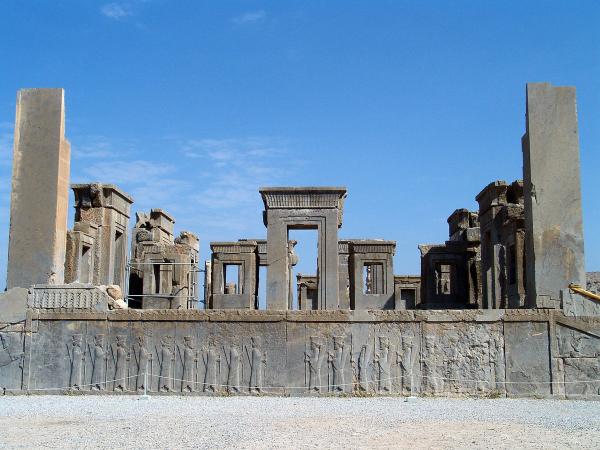 The works left by Khasyar Shah; Thatcher's Palace
The works left by Khasyar Shah; Thatcher's PalaceInscriptions of King Xerxes:
There are 12 inscriptions left by Khashayar Shah, which are as follows:
Khashayar Shah's inscription in Persepolis: This inscription is written in three ancient Persian languages, Elamite and Akkadian. The ancient Persian text of this book has 20 lines that praise Ahura Mazda, introduce King Xerxes, describe the vestibule building in Persepolis and other buildings, and at the end, pray at the door of Ahura Mazda.
The second inscription of Xerxes in Persepolis, which is known as inscription B, is written in Persian and has 30 lines and includes the praise of Ahuramazda, the introduction of King Xerxes, the description of a building in Perseus and other buildings, and at the end a prayer to Ahuramazda.
There are 6 other inscriptions of Xerxes Shah in Persepolis, some of them are bilingual and others are trilingual. The lines of each of these inscriptions are different from each other and contain the content of praising Ahura Mazda, introducing King Xerxes, describing his actions and praying to Ahura Mazda.
The inscription of Xerxes in Alvand:
There are three pot inscriptions left in Susa from Xerxes, also “Elvand inscription” and “Van inscription” are among other inscriptions that were written during the period of this king. Alvand inscription has three ancient Persian, Elamite and Akkadian languages. Its Persian text has 20 lines, which are located on the right side of the inscription of Darius Alvand, the content of this inscription is the praise of Ahuramazda and the introduction of Xerxes.
One inscription has three languages and 27 lines, and its content included the praise of Ahura Mazda, the introduction of the king, and the mention of the building that Darius built and wrote the memorial inscription on.
The Hamedan inscription is another inscription of Xerxes that was engraved on a silver cup in Hamedan. This inscription has only one line, which is also in ancient Persian language. It has been said that this cup is located in the house of King Xerxes.
The inscription of Persepolis is written in ancient Persian and Akkadian, and the ancient Persian text of the inscription has 11 lines. The inscription includes the praise of Ahuramazda, the introduction of the king, and the description of the construction that Xerxes started and Ardeshir finished.
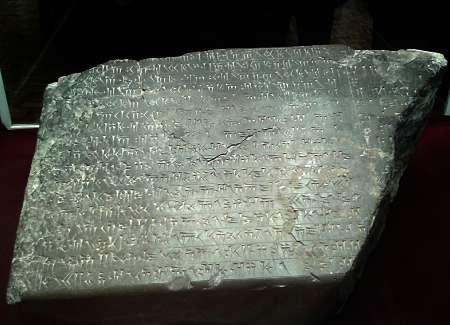 The inscription of Khasyar Shah in Alvand
The inscription of Khasyar Shah in AlvandDeath of Xerxes:
Xerxes was in charge of leading the Achaemenid government for 20 years, and after this period, he was killed in a conspiracy by the head of the royal guard along with one of the court eunuchs. He was buried in Taghesh Rostam, which is the family tomb of Achaemenid kings.
The tomb of Xerxes is one of the rock tombs located in Naghse Rostam. This tomb is located on the chest of Hajiabad mountain, which is carved and has a height of 26 meters from the ground.
The distance between Khasyar's tomb and Dariush's tomb is about 100 meters and it is carved in the shape of a crucifix. On the upper part of the cross is the symbol of Forohar and the moon, and above it is drawn an image of Xerxes. In this picture, Xerxes is stretching his hand towards Forohar and Ashdani is in front of them. Under the king's feet is an Orang, which is carried by people from different lands.
 The burial place of Khasyar Shah
The burial place of Khasyar ShahThe entrance to the tomb of Xerxes is three meters and there is a small room in front of its entrance. Three graves have been dug in this entrance and it is not known how many people were buried in this grave along with the king. The tomb of Darius is located on the right side and they are very similar to each other in terms of patterns and architecture.
Xerxes is one of the great kings of the Achaemenid dynasty who was able to pacify Egypt and Babylon and to continue the work of Darius in attacking Greece, he provided an army to attack there. King Xerxes' attack on Greece led to the start of wars in which some of them were victorious and others were defeated. Iran's wars with Greece did not benefit Iran and dealt a great blow to the Achaemenid Empire.
compilation: Cover biographical section
